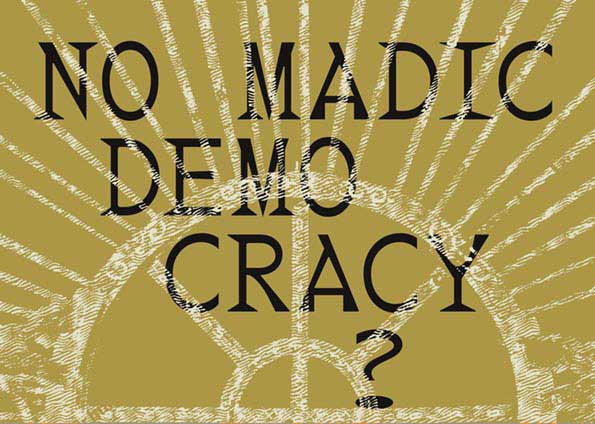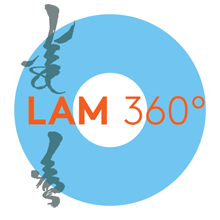29 July 2019
NOMADIC DEMOCRACY

Nomadic Democracy ?
ULAANBAATAR PUBLIC ART WEEK - 27 Sept – 3 Oct - 2019
Nomadic Democracy ? concept by Maurizio Bortolotti
Migration is one of the major worldwide issues today, which challenges the economical capitalistic strategies and generates a critical point for the Western model of democracy. Looking at this issue from the point of view of the global economy, it seems to incite a reinstallation of borders, especially in and around Europe and the United States. Migration has taken a negative meaning because it is seen as a phenomenon that produces a lot of economic and social instability. Ideally, due to migration we have to re-negotiate our view of democracy and its influence on our lives. While looking at it from a central Asian perspective, Mongolia can offer a different model to deal with this issue.
The cultural and social roots of Mongolia are based on nomadism. This can suggest an alternative way to look at the issue of migration, because nomadism can suggest a different mental approach, emphasizing the possibility of exploring the ”roots connected to land and humankind”.
Mongolia is a democracy located in the geographical sphere of central Asia, as a result of its history. On this account, Paula Sabloff in 2002 quoted: "Clearly Genghis Khan has become a major symbol of Mongolian independence." On the contrary, Genghis Khan is more than a symbol of sovereignty, supported by recent research which suggests that his ideas on governance forms an integral part of Mongolian political culture" 1.
According to Sabloff, a nomadic perspective of migration can offer an alternative social model to govern our everyday life. She reiterates: "the democratic political culture is not an import. Rather, it is built on the Mongolians’ nomadic culture of independence as well as their knowledge of Genghis Khan’s government, which comes from their written and oral history." 2
Ideally, the nomadic perspective of life and governance can be inferred as a new social model that is an alternative and flexible solution for the challenges faced by democracies worldwide in today’s world. For example, the concept of land coming from nomadism can inspire a different idea of democratic governance based on the tolerance, respect, human scale values and mobility. Although half of the Mongolian population occupies this land living in yurts, the citizens of the capital Ulaanbaatar still live with a clear understanding of the phenomenon of nomadism. The impact of this social model based on nomadism has created in Mongolia a fresh approach to art as well. Mongolian artists have developed over time an inherent ability of working together in a collaborative spirit, looking at their own nomadic roots, evoking the myth of the Sky and the Land still being immersed in it. The Biennial Land Art Mongolia was inspired by all this since its first edition.
In his recent book Down to Earth (2017),Bruno Latour quoted: ”If nature has become territory, it makes a little sense to talk about an ‘ecological crisis’, ‘environmental problems’, or a ‘biosphere’ to be rediscovered, spares, or protected.” (pg. 8) And more ahead it connects explicitly migration with the climate changes: “Migrations, explosion of inequality, and new Climate Regime: these are the same threat.” [...] “The climate crisis is forcing people they do not welcome to cross their frontiers;” (pg.9-10) (…) how can we reweave edges, envelopes, protections; how can we find new footing while simultaneously taking into account the end of globalization, the scope of migration, and also the limits placed on the sovereignty of nation - states that are henceforth confronted by climate change?” (pg.11) . On this account, the keen analysis of Latour sets up a basic link between two fundamental issues of the contemporary world: migration and climate change. These two topics can find a new understanding if we look at them from the angle of the nomadic culture. because it can offer an interesting and contemporary model which will be at the center of the Ulaanbaatar Public Art Week 2019 and the next LAM360 Biennial going to happen in 2020. This biennial has been initiated based on the concept of Land Art, because Mongolia has a vast territory covered by steppe with a powerful presence of nature, most of which is not contaminated by human settlements. For this reason, the huge natural environment of Mongolia is the adequate location and a potential natural lab with a strong tradition of nomadic life, proving to be an alternative solution towards dealing with these two key issues prevalent in today’s volatile world.
In his book, Latour states that migration is a phenomenon linked to the climate changes. Therefore, in this conference and in the Biennial of the next year we would like to propose nomadism as a cultural model (of course not as political or social model, and this means not as “a political or social solution” of the problems because this is not the goal of an Art Biennial). For instance, the concept of "Land" and "distance" can be different in the nomadic perspective as it has been pointed out recently.3 Ideally, as a cultural model nomadism can suggest a different mental approach to these issues, taking the fact into consideration that human beings, as inhabitants of our planet as nomads who live in our planet moving around with a “nomadic” attitude. Instead, to separate between citizens, living in a state with clearly borders and “invaders”, driven by poverty, war and hunger to break through .
1/2. P. Sabloff (USA),"Genghis Khan and Modern Mongolian Identity: The Democracy Connection" The Mongolian Journal of International Affairs, #8-9 , 2002.
3. "Distance and Speed. Rethinking the Imaginative Potential of Space and Velocity in Inner Asia" Caroline Humphrey & Gregory Delaplace Conference held at the Musée du Quai Branly (Paris), 7th and 8th of March, 2019.
Sessions' s blurbs
1. The Nomadic Land. Nomadism, Land and Democracy.
Mongolia can offer a different model to deal with this issue. Indeed, the cultural and social roots of this country are Nomadism, and this can suggest us another way to look at the issue of Migration because Nomadism can propose a different mental approach. It affects the possibility to explore the ”roots connected to land and humankind”. Because Mongolia is a democracy located in the geographical sphere of central Asia, as a result from its history. Almost 20 years ago, in 2002, Paula Sabloff wrote: "Clearly Genghis Khan has become a major symbol of Mongolian independence." However, he is more than a symbol of sovereignty, for recent research suggests that his ideas on governance form the core of Mongolian citizens’ political culture" 1. Is it correct today, after 17 years from the Sabloff's statement, talking again about Nomadic Democracy? What is the specificity of Nomadic roots in the political and social identity of contemporary Mongolia?
2. Can Art rework the Environment?
Bruno Latour in his recent book Down to Earth (2017), writes: ”If Nature has become territory, it makes a little sense to talk about an ‘ecological crisis’, ‘environmental problems’, or a ‘biosphere’ to be rediscovered, spares, or protected.” Signs of an ecological Crisis and Climate change are visible everywhere in the contemporary world. According to Latour this is more direct because we are completely embraced by it. His assessment is a clear invitation to rethink completely the relation with our environment which affects so deeply our life. We need new strategies to deal with this issue because at risk is our future of dwelling on Earth. Can art show how to rethink our relationship with the Environment? Does it offer new models to live not in opposition but as part of it?
3. Moving the borders. Migration and its Discontents.
One of the major worldwide issues today is Migration, which challenges the economical capitalist strategies and generates a critical point for the Western model of Democracy. Looking at this issue from the point of view of the global economy, it seems to incite a reinstalling of borders, especially in and around Europe and the US. Migration has taken a negative meaning because it is seen as producing a lot of economical and social instability. So, due to Migration we have to renegotiate our view of Democracy and its influence on our life. Migration represents an involution or a chance for the contemporary society and our idea of Democracy?






